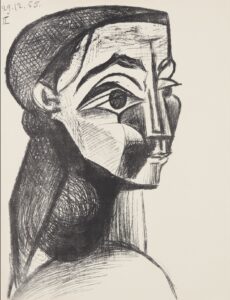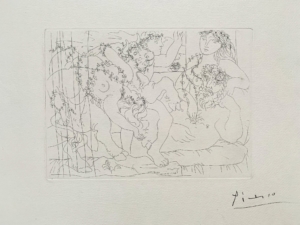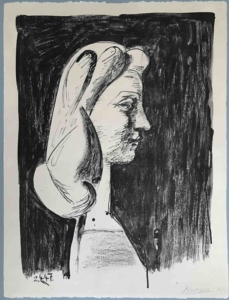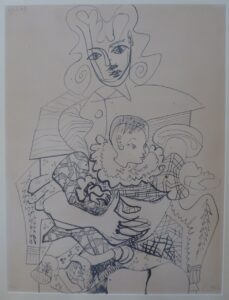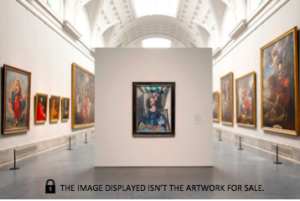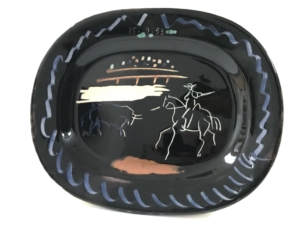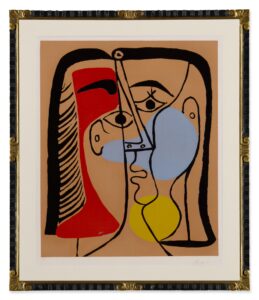Blind Minotaur Led by Marie-Thérèse with a Dove in a Starry Night (Minotaure aveugle guidé par Marie-Thérèse au pigeon dans une nuit étoilée), 1934
From the Suite Vollard (S.V. 97)
Bloch 225 IV Bb
16 7/16 x 21 inches (41.8 x 53.3 cm.)
All works are inspected prior to delivery, work will be sent out tracked and insured at buyers cost. If you'd like to make specific arrangements or discuss collection then please contact us directly.
Accepted: Wire transfer
ART PLEASE Assurance Policy: Every ART PLEASE seller has been approved by ART PLEASE after a thorough review. All of our sellers are required to accept the following ART PLEASE policy: A buyer may return an item purchased through ART PLEASE, if the item received is not as described in its listing, or is found to be unauthentic.
Pablo Picasso, one of the most influential artists of the 20th century, is renowned for his prolific and diverse body of work. In 1934, he created a remarkable painting titled "Blind Minotaur Led by Marie-Thérèse with a Dove in a Starry Night (Minotaure aveugle guidé par Marie-Thérèse au pigeon dans une nuit étoilée)," which is a testament to his ever-evolving style and creative genius. This artwork is a prime example of Picasso's exploration of classical mythology and his personal life, particularly his relationship with his muse and lover, Marie-Thérèse Walter. In this piece, Picasso depicted a blind Minotaur, a mythological creature with the body of a man and the head of a bull, being guided by Marie-Thérèse. The Minotaur is central to Picasso's work during this period, representing his inner turmoil and complexities.
In "Blind Minotaur Led by Marie-Thérèse with a Dove in a Starry Night," Picasso's use of abstract and distorted forms is evident. The background, a starry night, adds a dreamlike quality to the composition. The presence of a dove, often symbolizing peace and hope, provides a striking contrast to the anguish of the Minotaur. Picasso's masterful use of color and shape lends depth and emotion to the painting, inviting viewers to explore the intricate relationships between the characters and the narrative. This artwork stands as a testament to Picasso's ability to convey complex emotions and themes through his unique artistic language, offering viewers a glimpse into his inner world and personal struggles during this period in his life.



